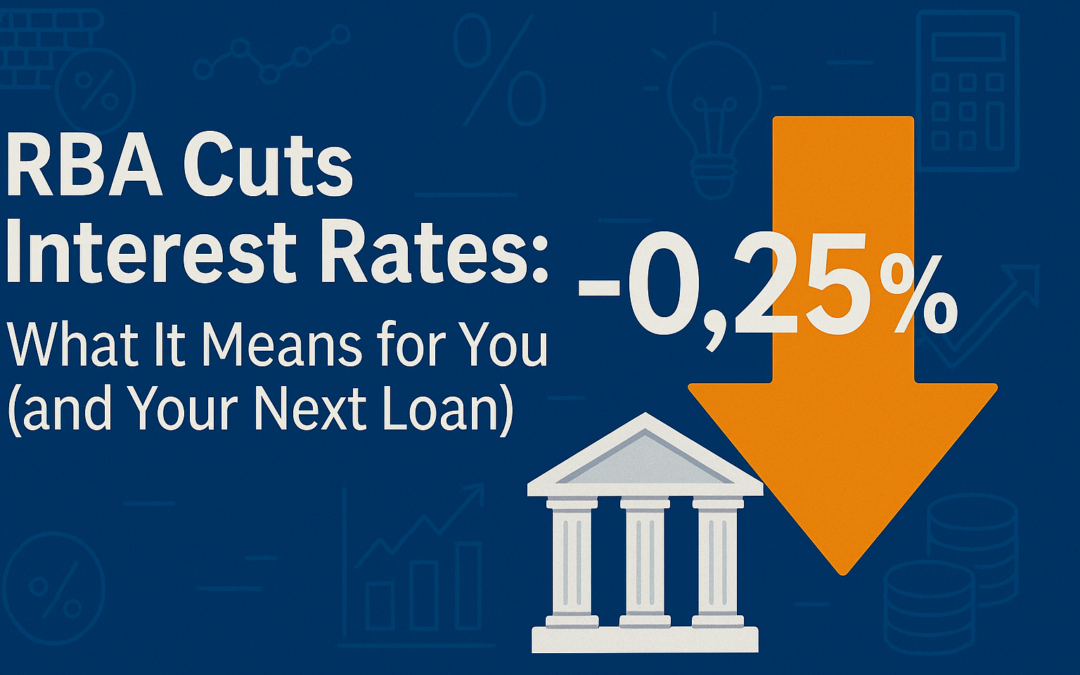
RBA Cuts Rates for the First Time in Two Years: What It Means for Your Finances
The Wait Is Finally Over
After years of rising interest rates that have tested Australian households and businesses, the Reserve Bank of Australia (RBA) has finally delivered some welcome relief. In its May meeting, the RBA cut the official cash rate by 25 basis points to 3.85% – the first reduction in over two years.
This significant shift in monetary policy marks a turning point for borrowers across the country. But what does it mean for your finances, especially if you’re self-employed or running a small business? Let’s break it down.
Why Now? The Economic Picture
The RBA’s decision reflects growing confidence that inflation is finally under control. Recent data shows that core inflation has returned to the RBA’s target range of 2-3%, sitting at 2.9%. This crucial development has allowed the central bank to shift focus from fighting inflation to supporting economic growth.
Despite global uncertainties – including recent U.S. credit rating downgrades and ongoing trade tensions – Australia’s economy remains resilient:
- Unemployment is steady at 4.1%
- The labour market participation rate is strong at 67.1%
- Economic growth has slowed but remains positive
What This Means for Homeowners
If you’re currently paying off a mortgage, this rate cut could deliver meaningful savings:
- On a $500,000 loan, you could save approximately $76 per month (assuming lenders pass on the full cut)
- On a $1 million loan, potential monthly savings increase to about $152
For those who have been struggling with higher repayments over the past two years, this represents the first real relief in a challenging period. While one rate cut won’t completely offset previous increases, it signals a potential change in direction that could lead to further cuts later this year.
Self-Employed Australians: Your Opportunity Window
If you’re self-employed or running a small business, this rate cut opens several strategic opportunities:
1. Business Expansion
Lower interest rates make business loans more affordable, potentially enabling expansion plans that may have been on hold during the higher rate environment.
2. Equipment and Vehicle Finance
If you’ve been delaying purchases of new equipment, vehicles, or other business assets, now could be an ideal time to reassess. With improved borrowing conditions, asset finance options become more attractive.
3. Refinancing Existing Debt
Many self-employed Australians have been carrying higher-interest debt through the rate hiking cycle. The new environment creates favourable conditions for consolidating or refinancing this debt.
Looking Ahead: Will Rates Fall Further?
While the RBA has made its first move, economists remain divided on the pace of future cuts. Our analysis suggests:
- The next rate cut could come as soon as August, depending on inflation data
- A more conservative scenario would see another cut in November
- By mid-2026, we could see the cash rate settling between 3.0-3.5%
The RBA has made it clear that future decisions will depend on economic data, particularly inflation figures and employment statistics.
How Sanford Finance Can Help
As specialists in lending solutions for self-employed Australians and small business owners, we’re uniquely positioned to help you navigate this changing interest rate environment:
- Home Loan Review: Let us assess your current mortgage and identify potential savings through refinancing
- Business Lending Solutions: Access our network of over 40 lenders who understand the unique needs of self-employed professionals
- Asset Finance: Explore competitive rates on equipment, vehicle, and other asset purchases
- Strategic Planning: Develop a financing strategy that takes advantage of the current rate environment
Take Action Now
The rate cut environment won’t last forever, and taking action now could secure you significant savings over the life of your loans.
Contact our team today for a no-obligation review of your financial position. We’ll provide clear, straightforward advice on how to make the most of this shifting rate environment.
Sanford Finance – Smart Lending for Self-Starters
Disclaimer: This information is general in nature and does not take into account your personal financial situation. It is provided for educational purposes and should not be considered financial advice. Please consult with a financial professional before making any financial decisions.











